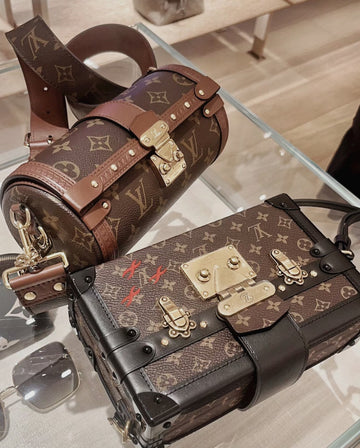When it comes to iconic luxury brands, Louis Vuitton stands at the pinnacle, known for its exquisite craftsmanship and timeless designs. But how did this legendary brand come to be? Join us as we delve into the origins of Louis Vuitton, exploring its humble beginnings and the journey that transformed it into a global symbol of sophistication and style.
1. The Birth of a Visionary:
The story of Louis Vuitton begins in 1821, in a small village in Anchay, France. Born on August 4, 1821, Louis Vuitton was the son of a farmer and a hat maker. Orphaned at a young age, Vuitton left his rural home at just 16 to seek his fortune in Paris. His journey to the capital city marked the beginning of a remarkable transformation from a modest beginnings to becoming a visionary in the world of fashion.
2. Crafting the Future:
In Paris, Vuitton started working as a trunk-maker and packer for a prestigious trade house. His skills quickly garnered attention for their exceptional quality and innovation. Vuitton’s experience and expertise allowed him to understand the needs of the traveling elite, who sought both functionality and elegance in their luggage.
3. The Birth of a Brand:
In 1854, Louis Vuitton opened his own workshop on Rue Neuve des Capucines in Paris. His revolutionary approach to trunk-making set him apart from his competitors. Vuitton introduced flat-topped trunks that were stackable and durable, which was a significant departure from the bulky, rounded designs of the time. This practical innovation catered to the needs of travelers, who appreciated the ease and efficiency of Vuitton’s design.
4. The Iconic Monogram:
In 1896, Vuitton’s son, Georges Vuitton, introduced the now-iconic LV monogram. The design featured interlocking L and V initials along with a distinctive pattern of floral motifs. This monogram was not only a hallmark of luxury but also a clever strategy to deter counterfeiting, making it easier to identify authentic Louis Vuitton pieces.
5. Expanding Horizons:
Throughout the late 19th and early 20th centuries, Louis Vuitton continued to innovate and expand its product range. The brand introduced a variety of leather goods, including handbags, wallets, and accessories. Vuitton’s commitment to quality and craftsmanship earned him a loyal clientele among Europe’s elite and royalty.
6. A Legacy of Excellence:
After Louis Vuitton’s death in 1892, his legacy was carried on by his family. Under the leadership of Georges Vuitton and subsequent generations, the brand continued to flourish and expand globally. Today, Louis Vuitton is renowned not only for its luxury leather goods but also for its high-fashion apparel, shoes, and accessories.
7. Iconic Collaborations and Modernisation:
In the late 20th and early 21st centuries, Louis Vuitton embraced modernity through collaborations with contemporary artists and designers. These partnerships, including those with Marc Jacobs, Stephen Sprouse, and Takashi Murakami, brought fresh perspectives and creativity to the brand while maintaining its core values of elegance and quality.
8. Continuing the Legacy:
Louis Vuitton remains a symbol of luxury and innovation, with its iconic monogram and timeless designs continuing to capture the imagination of fashion enthusiasts worldwide. The brand’s commitment to excellence and its ability to blend tradition with modernity ensure that its legacy endures.
From its humble beginnings in rural France to becoming a global icon of luxury, the story of Louis Vuitton is one of innovation, craftsmanship, and enduring elegance. The brand’s origins reflect a dedication to quality and a vision that has shaped the luxury fashion industry. As we celebrate the legacy of Louis Vuitton, we recognise its profound impact on fashion and its continued influence on style and sophistication.




